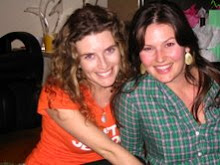
Not to be cliche but diamonds are always really exciting to us GITNP ladies, however we all want to avoid the karmic price of wearing a huge rock on your finger (or ears or neck...) that cost a young child in Africa their hand or arm. In addition to the social concerns (which are sickening--please educate yourself on the issue if you haven't already) of precious gems and metals, there are also environmental concerns. The mining of gold, for instance, can have adverse affects on the environment such as polluted drinking water, toxic chemicals in the air and destroying natural habitiats and wildlife. Most consumers don't know where the gold in their products comes from, or how it is mined. Gold mining is a dirty industry: it can displace communities, contaminate drinking water, hurt workers, and destroy pristine
 environments.-Nodirtygold.org
environments.-Nodirtygold.orgEvery ounce of gold produced results in 30 tons of mine waste- brilliantearth.com
Now calm down. This issue is not relegating you to a life of puca shell necklaces and hippie moon rings. Their are some wonderful resources for responsibly mined
 and produced gems and precious metals. Firstly T
and produced gems and precious metals. Firstly T iffany's (sigh,we heart Tiffany's, and tiffany blue) has a blanket environmental and socially responsible guarantee on all our their products. Companies from JCPenney to Van Cleef and Arpel have committed to start to using only safely mined and produced gold (for a complete list of companies read more.) There are many companies that offer conflict free diamonds which are often mined in Canada.
iffany's (sigh,we heart Tiffany's, and tiffany blue) has a blanket environmental and socially responsible guarantee on all our their products. Companies from JCPenney to Van Cleef and Arpel have committed to start to using only safely mined and produced gold (for a complete list of companies read more.) There are many companies that offer conflict free diamonds which are often mined in Canada.What to look for when shopping for jewllery-
The seal of The Council for Responsible Jewllery Practices which is a non profit company with this objective: "Our objective is to promote responsible ethical, social and environmental practices throughout the diamond1 and gold2 jewellery supply chain, from mine to retail.". All these companies are members.
Ask to see their seal of approval that the diamonds and gold they sell are responsibly procured. For more information read this buyer guide from Amnesty International.
Another idea is share to the blood diamonds and dirty gold that already exist in your family. Pass them on or have them remade into new shapes and updated styles instead of purchasing new jewelry.
But just so we're clear (boyfriends, husbands, etc)...we still want jewelry...just make sure its the socio and eco-friendly kind!
Do you have any good links to eco-friendly jewelery? Share them with everyone in our comments sections. Happy shopping!
p.s. What about the Kimberly Process? It's a voluntary program, that still has many cracks but has obviously done a lot of good in terms of identifying the origin of rough diamonds. You can also read more about conflict diamonds and The Kimberly Process Certification Scheme here

